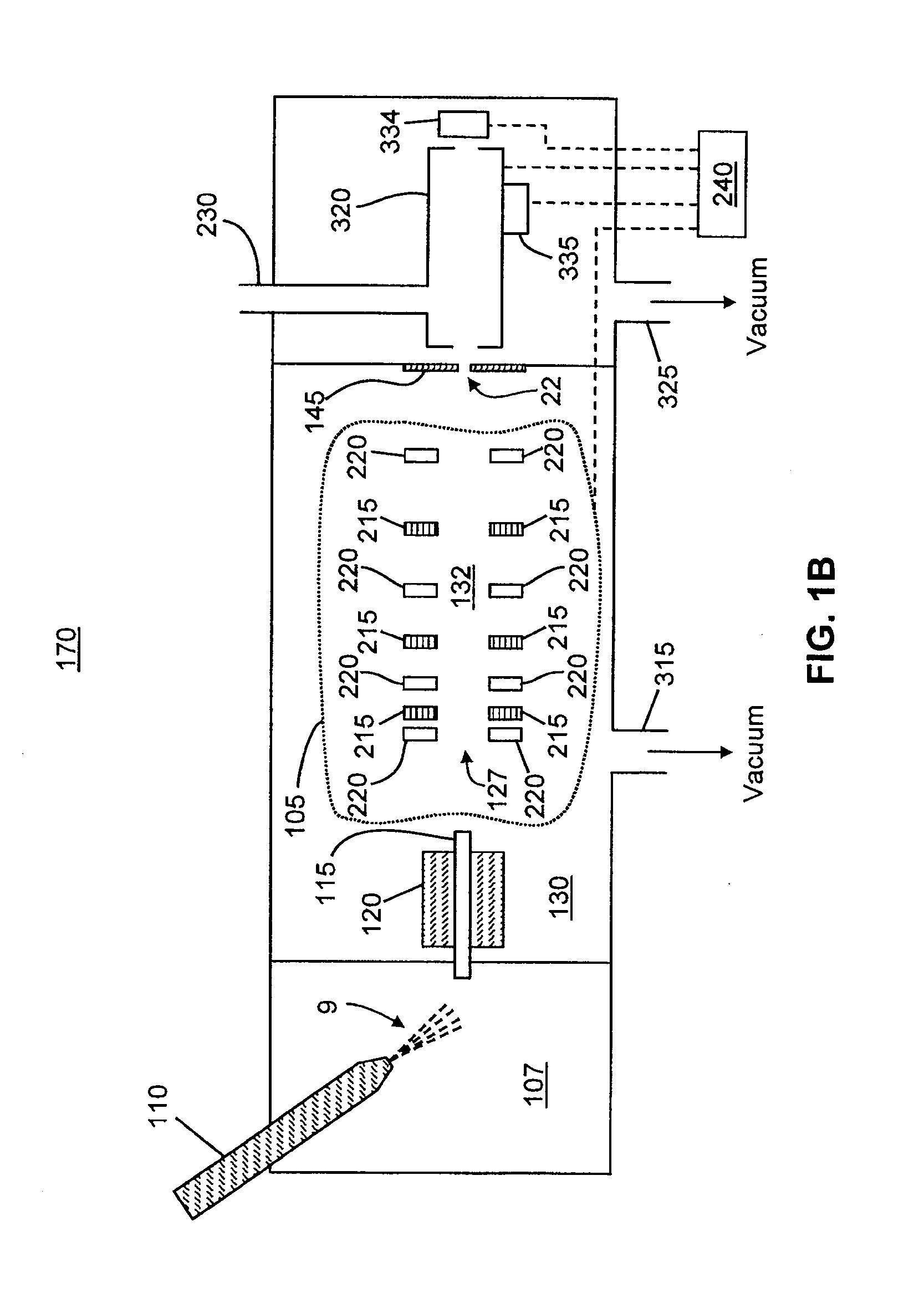Ion Population Control in a Mass Spectrometer Having Mass-Selective Transfer Optics
a mass spectrometer and mass-selective transfer technology, applied in the field of ion trap mass spectrometers, can solve the problems of reducing the sensitivity adversely affecting the cycle time of the ion trap, and affecting the resolution and mass accuracy
- Summary
- Abstract
- Description
- Claims
- Application Information
AI Technical Summary
Benefits of technology
Problems solved by technology
Method used
Image
Examples
Embodiment Construction
[0021]Unless otherwise defined, all technical and scientific terms used herein have the meaning commonly understood by one of ordinary skill in the art to which this invention belongs. All publications, patent applications, patents, and other references mentioned herein are incorporated by reference in their entirety. In case of conflict, the present specification, including definitions, will control. The disclosed materials, methods, and examples are illustrative only and not intended to be limiting. Persons having ordinary skill in the art will appreciate that methods and materials similar or equivalent to those described herein can be used to practice the invention.
[0022]Exemplary embodiments of the invention will now be described and explained in more detail with reference to the embodiments illustrated in the drawings. The features that can be derived from the description and the drawings may be used in other embodiments of the invention either individually or in any desired co...
PUM
 Login to View More
Login to View More Abstract
Description
Claims
Application Information
 Login to View More
Login to View More - R&D
- Intellectual Property
- Life Sciences
- Materials
- Tech Scout
- Unparalleled Data Quality
- Higher Quality Content
- 60% Fewer Hallucinations
Browse by: Latest US Patents, China's latest patents, Technical Efficacy Thesaurus, Application Domain, Technology Topic, Popular Technical Reports.
© 2025 PatSnap. All rights reserved.Legal|Privacy policy|Modern Slavery Act Transparency Statement|Sitemap|About US| Contact US: help@patsnap.com



